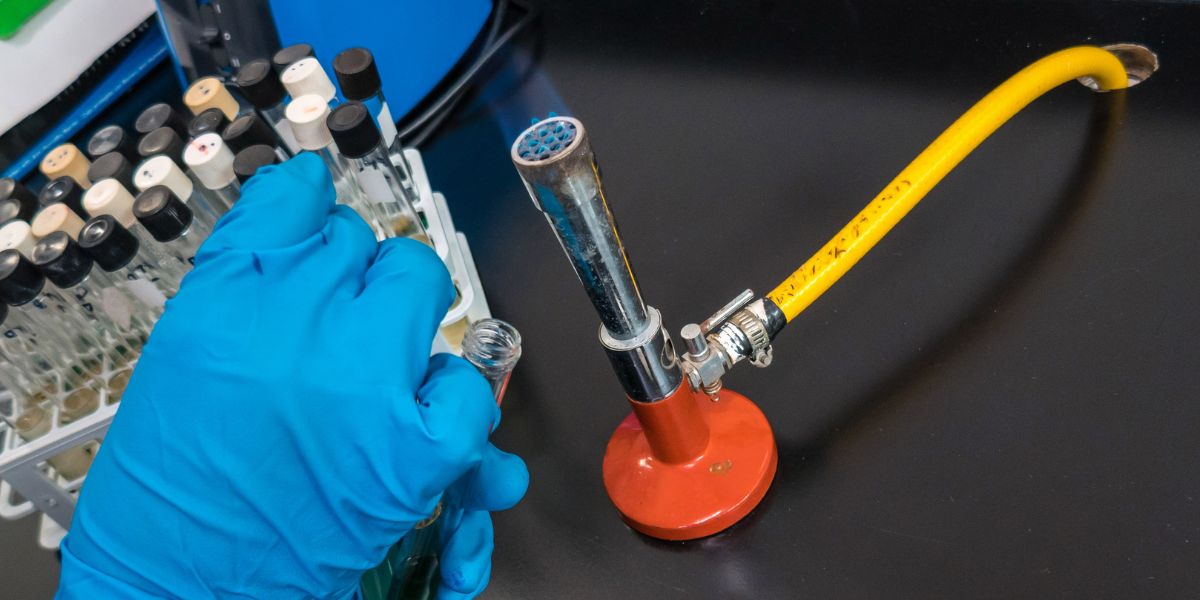
To safely operate a Bunsen burner in a school lab, there are crucial steps you must follow diligently. From checking for gas leaks to adjusting flame intensity, each action plays a vital role in ensuring a secure lab environment. But what happens if you overlook a single precaution? Stay tuned to discover the potential consequences and crucial safety tips that can make all the difference in your lab experience.
Bunsen Burner Safety Guidelines
Do you know how to safely operate a Bunsen burner in the school lab?
It's crucial to follow Bunsen burner safety guidelines to prevent accidents. First, ensure your workspace is clear of any flammable materials. Keep your hair tied back, and avoid wearing loose clothing that could easily catch fire.
Before lighting the burner, check for any gas leaks by listening for a faint hissing sound and checking for the smell of gas. If you suspect a leak, inform your teacher immediately.
When lighting the Bunsen burner, always use a striker or a lighter with a long handle to ignite the gas. Adjust the air hole to obtain the desired flame: a blue flame indicates complete combustion, while a yellow flame signals incomplete combustion.
Remember to never leave a lit Bunsen burner unattended, and always turn off the gas before leaving the lab. By following these safety guidelines, you can confidently and securely use a Bunsen burner in the school lab.
Setting Up the Bunsen Burner
To set up the Bunsen burner safely in the school lab, ensure the gas valve is closed before attaching the rubber tubing. This step is crucial to prevent any gas leaks and ensure a secure connection. Once the gas valve is closed, carefully attach one end of the rubber tubing to the gas nozzle on the lab bench and the other end to the Bunsen burner. Make sure the tubing is securely fastened to both the gas source and the burner to avoid any mishaps during operation.
Next, check that the air hole on the burner is fully open before lighting it. The air hole controls the amount of oxygen mixed with the gas, affecting the flame's intensity and color. Once everything is properly connected, you can proceed to light the Bunsen burner using a striker or a match. Always light the match or striker before turning on the gas to avoid any accidents.
Adjusting the Flame Intensity
Adjusting the flame intensity on the Bunsen burner is crucial for controlling the heat output during experiments in the school lab. To adjust the flame intensity, start by turning the gas valve on the burner to begin the flow of gas.
Then, use the barrel of the burner to adjust the air hole. By opening the air hole, more air mixes with the gas, creating a hotter, blue flame. Conversely, by closing the air hole slightly, you can reduce the air intake, resulting in a cooler, yellow flame.
It's important to find the right balance to produce the desired heat for your experiment. Remember, a roaring flame indicates too much gas or not enough air, while a flickering or yellow flame suggests too much air.
Always adjust the flame carefully and attentively to ensure the safety and success of your lab work.
Shutdown and Clean-Up Procedures
After completing your experiment, ensure a safe shutdown and thorough clean-up of the Bunsen burner and surrounding area. Firstly, turn off the gas supply by gently closing the gas tap on the bench.
Next, close the air hole on the burner to extinguish the flame. Allow the burner to cool down before handling it. Once the burner is cool, detach it from the gas supply carefully.
To clean the burner, use a damp cloth to wipe away any soot or residue on the barrel and base. Be cautious as the burner may still be warm. Remember to clean the surrounding area as well, removing any spilled chemicals or debris. Dispose of any waste materials properly according to your lab's guidelines.
Lastly, ensure that all equipment is stored correctly, with the burner kept in a safe and designated place. Double-check that the gas supply is completely turned off. By following these shutdown and clean-up procedures, you maintain a safe environment in the lab for yourself and others.




